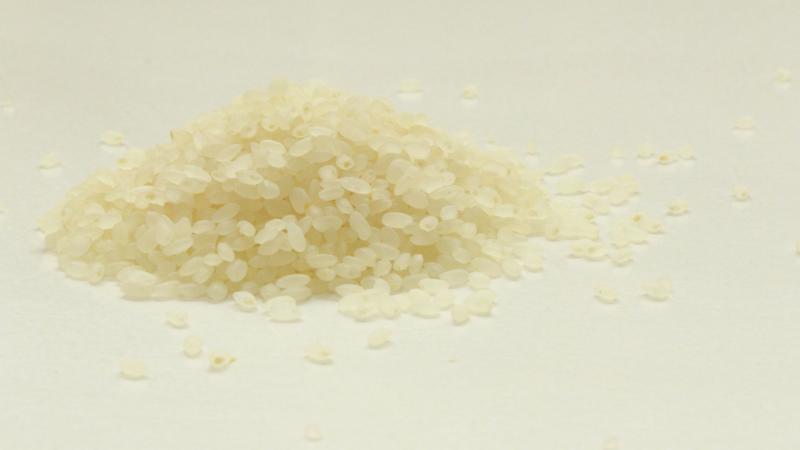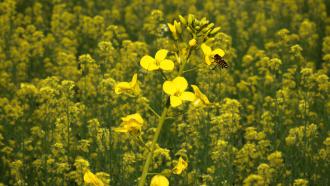
In thirty years, the global population of 7 billion will increase by 30% to a staggering 9.1 billion people. Feeding everyone with the same amount of land that is available today will undoubtedly be a challenge. Along with expanding cities gobbling up agricultural and forest land, changing climatic conditions with frequent spells of droughts also spell doom for food production. Hence, researchers around the world are developing drought-resistant varieties of food grains. In one such attempt, researchers at the Indian Institute of Technology, Delhi, offer critical insights into the intrinsic nature of certain types of rice that can resist drought.
Rice, a water-intensive crop grown by humans for thousands of years, is a staple in many countries and the Asian rice, Oryza sativa, is the most widely cultivated rice of the genus Oryza. The crop fails during a drought, and water scarcity affects more than 23 million hectares of rainfed rice production areas in South and Southeast Asia. While some varieties have the potential for drought adaptations, the researchers of the study are exploring the mechanism behind this through phenomics—the study of interactions of genes with changes in the environment.
“India has 34.5% of total irrigated area, which indicates that the rest of the farming area depends mostly on rain. Even after constructing 91 major reservoirs, only 162 billion cubic meters of water can be stored. Recently in India, eleven states out of twenty-nine were affected by drought, resulting in a 40% yield loss, amounting to $800 million. Therefore, our work aims at exploring the traits that can be used in selecting drought-resistant crop”, says Prof. Archana Chugh, from IIT Delhi and an author of the study published in the journal Plant Physiology and Biochemistry. The study was supported by the National Agricultural Science Fund (NASF) under the Indian Council of Agricultural Research (ICAR).
The researchers of the study investigated three varieties of rice; Sahabhagidhan—a local drought-tolerant variety, and two drought-sensitive varieties: IR64 and MTU-1010. The researchers simulated the drought condition by cutting off water supply to these plants for five consecutive days. They then explored the genetic factors that help these varieties tolerate drought and correlated them with the plant’s response to the applied stress with the aim of developing a reliable 'marker' for drought resistance, which indicates the plant's ability to survive periods of extreme water scarcity.
“A successful marker can be helpful in selection of drought-tolerant varieties at different levels like morphological, anatomical, biochemical, physiological and molecular. They should be easily detectable and stable. Secondary traits such as root attributes, xylem diameter, stomatal aperture, proline, and malondialdehyde can be used as selection criteria by plant breeders for high yield production and drought tolerance in rice”, explains Prof. Chugh in an interview with Research Matters.
But, what exactly happens to a plant during a drought? Lack of adequate water limits its growth and affects its morphology, physiology, and biochemistry. Leaves reduce in size, the stem and roots elongate, there is a reduction in photosynthesis, transpiration and biomass, and an imbalance in nutrients. The roots are the first to experience stress due to drought as they grow beneath the soil. Hence, to survive, they either become more dense, holding the soil together and maintaining the water potential or grow deeper to access more water.
The authors found that Sahabhagidhan, the drought-tolerant variety, continued to grow its roots during the stress, while the drought sensitive varieties showed a reduction in the rate of growth. Also, they observed that in Sahabhagidhan, the xylem vessel, which carries water in plants, had reduced its area and its numbers to survive the stress. This modification maintains water supply by avoiding the formation of air bubbles, known as cavitation.
The study also found a significant correlation between the morphological traits in these roots and the expression of aquaporin genes. Aquaporins are proteins that form pores in cell membranes. They regulate water uptake along with other small molecules. The researchers investigated two aquaporins, OsPIP2;5 and OsNIP2;1, and found that the drought tolerant variety showed an increase in OsPIP2;5, which may be useful to increase the intake of water and thus supply to aerial organs. A decrease of OsNIP2;1 in the same plant indicates another method of drought avoidance—decreasing the membrane permeability to avoid excess water loss.
Correspondingly, the drought sensitive variety showed a significantly lower content of proline—an amino acid used to synthesise proteins, than the drought-resistant variety. The researchers believe this is because the proline proteins assist in maintaining the stiffness of cell membrane during water deficient periods, enabling the cell to carry on functioning. As a result of drought, plants produce malondialdehyde (MDA), a known marker of oxidative damage, a condition wherein due to chemical imbalances, the plant is unable to detoxify itself of damaging elements. Oxidative damage can eventually lead to cell death. A 1.5 fold reduction in MDA content in Sahabhagidhan, as compared to the drought sensitive variety, implies the former’s superior resistance to drought.
“Improvement of drought tolerance in rice is a challenging task due to the high complexity of the traits and poor understanding of plant response against drought. Wide knowledge of various attributes can achieve yield stability under most devastating drought stress. Our study contributes more towards selectively breeding from the thousands of cultivars available,” says Dr. Chugh when probed about the potential for findings of the study. Marker-assisted selection (MAS), discussed in this research, can help feed the millions by intelligently selecting plants with desired traits.






